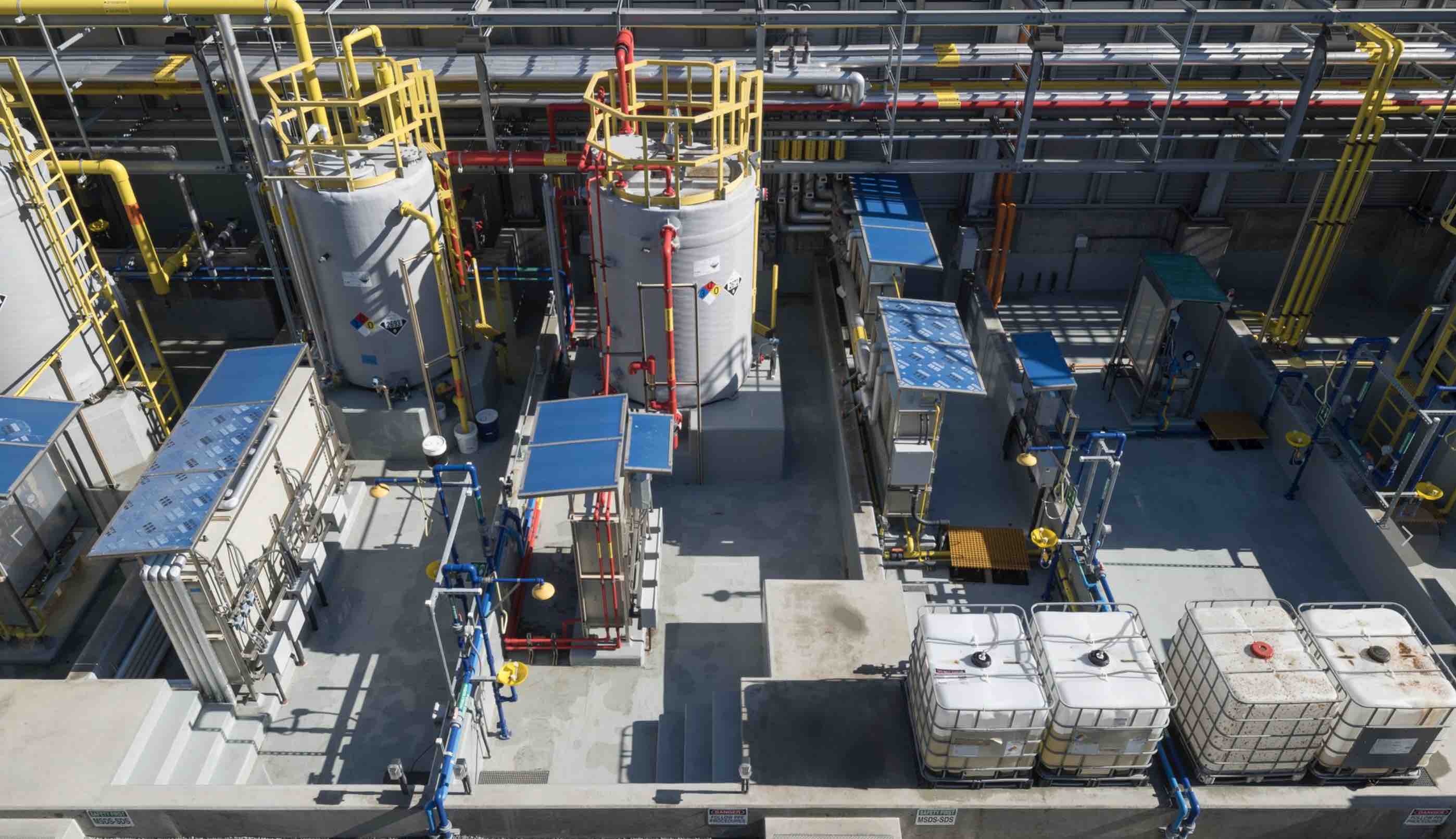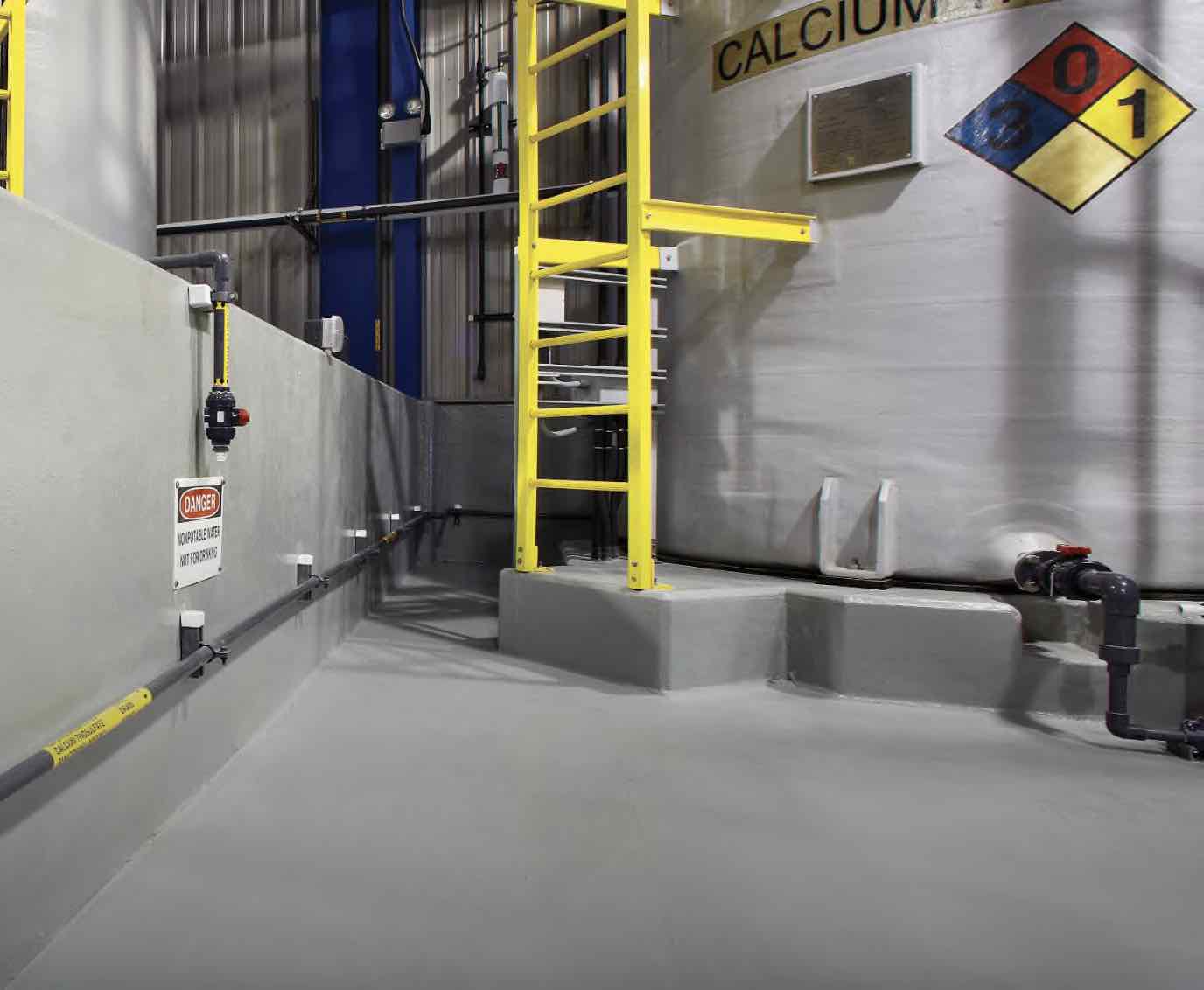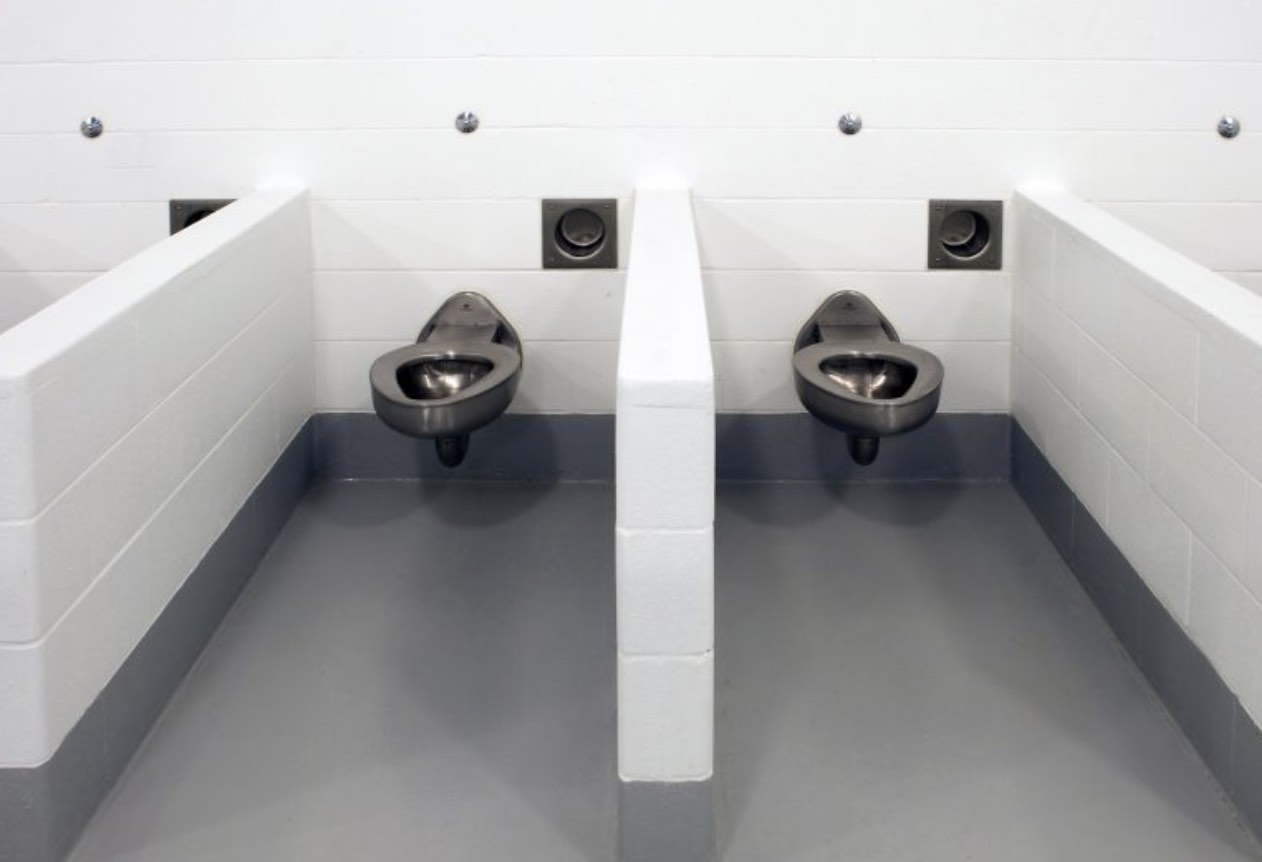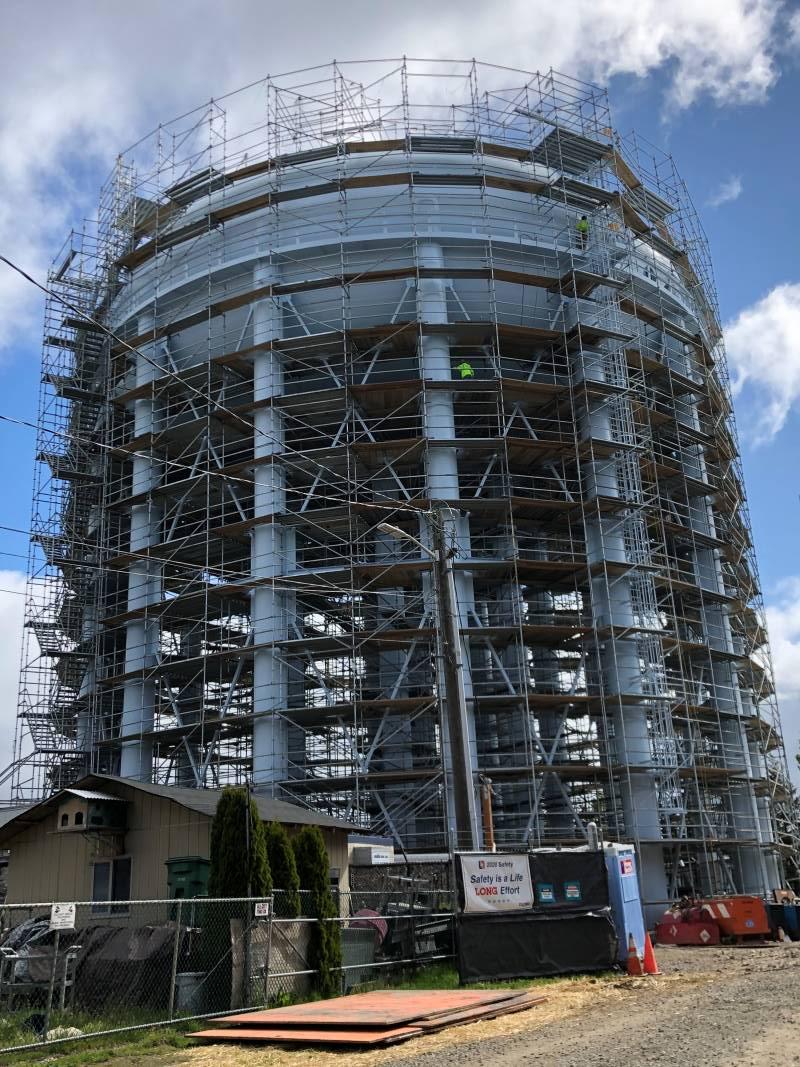
Getting Secondary Containment Right: A Specifiers Guide
When protecting our environment and ensuring workplace safety, secondary containment systems serve as a last line of defense against chemical spills and leaks.
- High Performance Coatings
When it comes to protecting our environment and ensuring workplace safety, secondary containment systems serve as the critical last line of defense against chemical spills and leaks. Yet too often, these systems fail not because of poor installation or maintenance, but because of inadequate specifications written at the project's outset. The difference between a containment system that performs reliably for decades versus one that fails within years often comes down to the details specified before the first shovel hits the ground.
Secondary Containment: Why Specifications Matter More than Ever
The Foundation of Success: Surface Preparation
Before discussing the containment system itself, we must address what lies beneath—the concrete substrate. Surface preparation is where many projects succeed or fail, yet it's frequently given insufficient attention in specifications.
Proper concrete surface preparation involves more than simply cleaning the surface. The substrate must be evaluated for structural integrity, moisture content, and contamination. Specifications should require concrete to be free of laitance, curing compounds, sealers, and any oil or chemical contamination. The surface profile must be appropriate for the chosen containment system—typically requiring a surface roughness that promotes mechanical adhesion while avoiding profiles so aggressive they create stress concentrations.
Moisture testing is equally critical. Concrete continues to cure and release moisture for months or even years after placement. Specifications must establish acceptable moisture vapor emission rates and require testing using standardized methods like ASTM F1869 or ASTM F2170. Failing to address moisture properly can lead to debonding, blistering, and osmotic failure of even the highest-quality containment materials.
Chemical Resistance: Beyond Generic Compatibility
One of the most common specification failures involves inadequate chemical resistance requirements. Generic statements like "resistant to acids and bases" provide insufficient protection against the specific chemicals that will be stored or processed at the facility.
Effective specifications must identify every chemical that could potentially contact the containment system, including:
- Primary chemicals being stored or processed
- Cleaning agents and maintenance chemicals
- Potential reaction products or byproducts
- Emergency response chemicals like foam concentrates
For each chemical, the specification should address concentration ranges, temperature exposure, and duration of contact. Chemical resistance testing should reference appropriate ASTM methods and require testing at conditions that match or exceed actual service conditions. This might include elevated temperatures, UV exposure, or cyclic thermal stress that could affect long-term performance.
The specification should also address mixed chemical exposures, as chemical combinations can create more aggressive environments than individual chemicals alone.
Reinforcement: Structural Integrity Under Stress
Secondary containment systems must withstand not only chemical attack but also mechanical stresses from thermal cycling, structural movement, and operational loads. Proper reinforcement specifications are essential for long-term performance.
Mat reinforcement provides critical tensile strength and crack bridging capability. Specifications should detail the type of reinforcement (fiberglass mat, polyester fabric, etc.), weight per unit area, and overlap requirements. The reinforcement schedule must account for high-stress areas like corners, penetrations, and joints where additional layers may be needed.
For systems subject to significant thermal cycling or structural movement, specifications might require elastomeric interlayers or flexible joint systems. These elements must be compatible with both the base containment material and the anticipated chemical exposures.
Resurfacing and Repair Protocols
Even the best secondary containment systems will eventually require maintenance or repair. Forward-thinking specifications address this inevitability by establishing protocols for resurfacing and repair work.
Resurfacing specifications should address surface preparation requirements for existing containment surfaces, including methods for removing contaminated or degraded material without compromising the underlying structure. The specification must ensure compatibility between existing and new materials, which may require substrate priming or intermediate bonding agents.
Repair protocols should establish acceptable repair methods for different types of damage, from minor surface scratches to more significant mechanical damage. This includes requirements for surface preparation, repair material selection, and quality control testing to verify repair integrity.
System Design Considerations
Beyond material specifications, the overall system design significantly impacts performance and longevity. Specifications should address:
Drainage and slope requirements ensure that spilled liquids flow to collection points rather than pooling on the containment surface. Minimum slopes, drain sizing, and access for cleaning must all be specified.
Joint and penetration sealing requires careful attention to movement capabilities, chemical resistance, and long-term durability. Specifications should detail acceptable sealant types, installation procedures, and replacement intervals.
Integration with other systems including fire suppression, ventilation, and monitoring equipment must be coordinated to prevent conflicts and ensure all systems can function properly together.
Quality Control and Testing
The best specifications are meaningless without proper quality control measures. Testing requirements should be established for both materials and installation workmanship.
Material testing might include tensile strength, elongation, chemical resistance, and thermal properties. Installation testing could involve adhesion testing, holiday detection for thin-film systems, or leak testing for critical areas.
Specifications should clearly establish who is responsible for testing, acceptable test methods, pass/fail criteria, and required documentation. Consider requiring third-party testing for critical applications to ensure objectivity.
Environmental and Regulatory Compliance
Secondary containment specifications must address applicable environmental regulations and industry standards. This includes EPA Spill Prevention, Control, and Countermeasure (SPCC) requirements, state environmental regulations, and industry-specific standards.
Specifications should ensure the containment system meets or exceeds minimum regulatory requirements while providing adequate safety margins for the specific application. This might include requirements for secondary containment volume calculations, leak detection systems, or emergency response procedures.
Long-term Performance and Lifecycle Considerations
The most cost-effective secondary containment systems are those designed for long-term performance rather than minimum initial cost. Specifications should consider the total cost of ownership, including maintenance requirements, expected service life, and end-of-life disposal considerations.
This might involve specifying higher-performance materials for critical applications, requiring additional protective measures in high-wear areas, or establishing preventive maintenance schedules to maximize system life.
Tnemec ChemBloc Solutions: Proven Performance for Secondary Containment
When specifying secondary containment systems, facility owners and engineers increasingly turn to proven coating solutions that offer comprehensive protection and long-term reliability. Tnemec's ChemBloc line, specifically Series 239SC and 252SC, represents advanced technology specifically designed for demanding secondary containment applications.
Series 239SC ChemBloc
Series 239SC is a modified novolac polyamine epoxy designed as a highly chemical resistant, multi-purpose resin for fiberglass reinforced mat (65 mils) or mortar/fiberglass reinforced mat (125 mils) secondary containment systems. This system offers several key advantages for specification writers:
Chemical Resistance and Durability: The system protects against harsh chemicals, thermal cycling, impact and abrasion, making it suitable for demanding industrial environments where multiple chemical exposures are expected.
Application Flexibility: Series 239SC can function as both a basecoat and saturant layer, with recommended dry film thickness ranging from 6.0 to 12.0 mils for resinous basecoats and 60 to 80 mils for mortar/slurry basecoats. This flexibility allows specifications to be tailored to specific performance requirements.
Low VOC Performance: With VOC content of only 0.13 lbs/gallon when unthinned, Series 239SC helps facilities meet strict environmental regulations while maintaining high performance.
Cure Schedule: The system provides traffic and mild chemical resistance after 24 hours, with full cure requiring up to 5 days for severe chemical exposures. This cure schedule allows for reasonable construction timelines while ensuring adequate protection for specific applications.
Series 252SC ChemBloc
Series 252SC represents Tnemec's novolac vinyl ester technology, offering enhanced chemical resistance for the most demanding secondary containment applications. Key specification advantages include:
Superior Chemical Resistance: As a vinyl ester system, Series 252SC provides enhanced resistance to aggressive chemicals compared to traditional epoxy systems, making it ideal for facilities handling strong acids, caustics, or solvents.
System Compatibility: Series 252SC can serve as both basecoat and topcoat, with compatibility for Series 206SC flexible basecoat when additional crack-bridging capability is required. This system integration ensures optimal performance across the entire containment structure.
Rapid Return to Service: With cure times allowing topcoating between 6 to 72 hours and service capability after 24 hours, Series 252SC minimizes downtime during installation or maintenance.
Construction Considerations: The system's 89% theoretical volume solids content and reactive monomer technology provides excellent build characteristics while maintaining application properties.
Specification Considerations for Tnemec Systems
When specifying either Series 239SC or 252SC, several critical factors should be addressed:
Primer Requirements: Both systems can be self-priming or used with Series 201 Epoxoprime for enhanced adhesion, particularly important for challenging concrete substrates.
Saturation Protocols: Both systems require specific saturant coat procedures when used with fiberglass mat reinforcement, ensuring proper wet-out and bond integrity.
Surface Preparation: The systems' performance depends heavily on proper concrete preparation, including moisture control and surface profiling to manufacturer specifications.
Chemical Exposure Assessment: Tnemec emphasizes the importance of consulting with technical services regarding specific chemical exposures to ensure appropriate system selection.
System Selection Guidance
The choice between Series 239SC and 252SC typically depends on the severity of chemical exposure and specific performance requirements:
- Series 239SC excels in general industrial applications with moderate to severe chemical exposures, offering excellent balance of performance, cost, and application characteristics.
- Series 252SC provides superior resistance for the most aggressive chemical environments where maximum protection is required, justifying the additional cost through enhanced durability and chemical resistance.
Both systems demonstrate Tnemec's commitment to providing engineered solutions rather than commodity products, with extensive technical support available to ensure proper specification and application.
The Cost of Getting It Wrong
The consequences of inadequate secondary containment specifications extend far beyond the immediate cost of system replacement. Environmental cleanup costs can reach millions of dollars, while regulatory penalties and legal liability can be even more severe. Business interruption during remediation adds another layer of cost that's often underestimated.
More importantly, inadequate containment systems put workers and communities at risk. The responsibility for preventing environmental contamination and protecting human health starts with writing specifications that actually work under real-world conditions.
Conclusion
Secondary containment systems are only as good as the specifications that define them. Success requires attention to every detail, from concrete surface preparation through long-term maintenance protocols. By investing time and expertise in developing comprehensive specifications upfront—and selecting proven coating systems like Tnemec's ChemBloc Series 239SC and 252SC—facility owners can ensure their containment systems provide reliable protection for decades to come.
The complexity of modern chemical processes and increasingly stringent environmental regulations demand nothing less than excellence in secondary containment design and specification. The cost of getting it right is always less than the cost of getting it wrong.
LET OUR KNOWLEDGE AND EXPERTISE HELP ENSURE YOUR NEXT PROJECT IS SUCCESSFUL

What Coatings Should be Used for Secondary...
Secondary containment coating systems are...

Correctional Facilities Require Coatings That...
Correctional Facilities require coatings that...

Elevating Quality: Experience as a Requirement in...
It is very important to incorporate contractor...